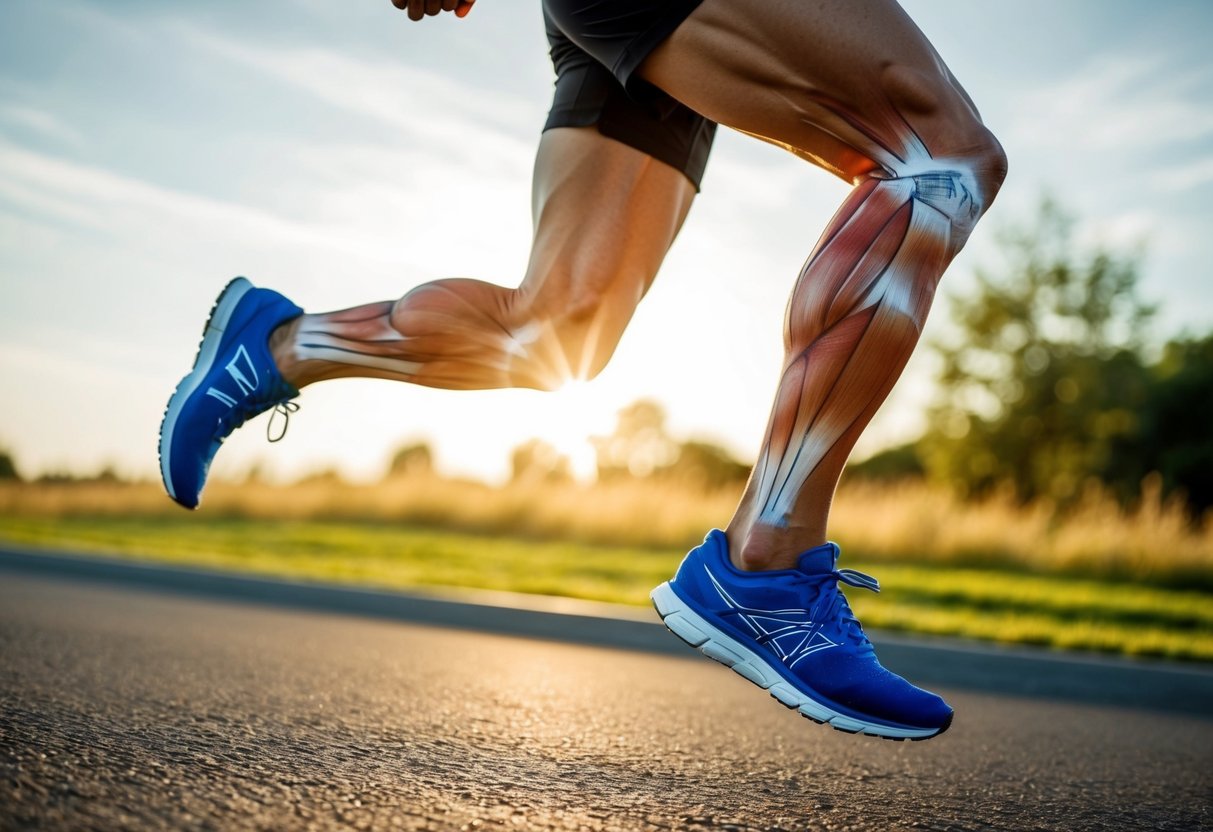Does Running Build Leg Muscle

Don’t forget to check out our Pacerocker, Trailviber, and Trailviber Auto Incline walking pad treadmills.
Running enthusiasts often wonder if their favorite activity can help build leg muscle. While running primarily improves cardiovascular fitness, it can indeed contribute to muscle development in the legs, particularly for beginners or those incorporating hill training and sprints. The impact of running on muscle growth depends on factors like intensity, duration, and terrain.
For those looking to maximize leg muscle gains through running, variety is key. Mixing up workouts with uphill runs, interval sprints, and long slow distance runs can target different muscle groups and stimulate growth. It's important to note that running alone may not be sufficient for significant muscle hypertrophy, and combining it with strength training can yield better results.
We'll explore how different types of running affect leg muscles, the anatomy involved, and ways to optimize your running routine for muscle development. Whether you're a seasoned runner or just starting out, understanding the relationship between running and leg muscle growth can help you tailor your workouts to meet your fitness goals.
Key Takeaways
- Running can contribute to leg muscle development, especially when varied in intensity and terrain
- Combining running with strength training optimizes leg muscle growth
- Proper nutrition and recovery are essential for muscle development from running
The Basics of Muscle Building and Running
Running impacts muscle development differently than traditional strength training. The effects depend on intensity, duration, and frequency of runs.
Muscle Growth Fundamentals
Muscles grow through a process called hypertrophy. This occurs when muscle fibers are damaged and repair themselves, becoming larger and stronger. To stimulate growth, muscles need:
- Progressive overload
- Adequate protein intake
- Sufficient rest and recovery
Resistance training is typically the most effective way to build muscle. It creates micro-tears in muscle fibers, triggering repair and growth. However, some forms of cardio can also contribute to muscle development under certain conditions.
How Running Affects Muscles
Running primarily targets the lower body muscles, including:
- Quadriceps
- Hamstrings
- Calves
- Glutes
Short, high-intensity runs can promote muscle growth by creating resistance similar to strength training. Sprints and hill runs are particularly effective for this purpose.
Long-distance running, on the other hand, may not build significant muscle mass. It can actually lead to muscle breakdown if not balanced with proper nutrition and recovery. This is because endurance activities prioritize efficiency over raw strength.
To maximize muscle gains from running, we recommend incorporating:
- Hill sprints
- Interval training
- Resistance exercises
These methods help maintain muscle while improving cardiovascular fitness.
Types of Running for Leg Muscles
Running offers various ways to build and tone leg muscles. Different styles target specific muscle groups and fitness goals.
Sprinting and Muscle Gain
Sprinting is a powerful way to build leg muscle. Short bursts of high-intensity running engage fast-twitch muscle fibers, promoting muscle growth. We recommend incorporating sprint intervals of 30-100 meters into your routine.
To maximize muscle gain, focus on proper form. Drive your knees high and push off with explosive force. Rest periods between sprints are crucial for muscle recovery and growth.
Try this sprint workout:
- 10-minute warm-up jog
- 8-10 sprints of 50 meters
- 90 seconds rest between sprints
- 10-minute cool-down
Distance Running and Muscle Endurance
Long-distance running primarily builds muscular endurance rather than size. It targets slow-twitch muscle fibers, improving their efficiency and stamina. Distance running tones legs and increases capillary density.
We suggest starting with 3-5 mile runs, gradually increasing distance over time. Maintain a steady pace you can sustain for the entire run. Focus on consistent foot strikes and a smooth rhythm.
To enhance muscle endurance:
- Run 3-4 times per week
- Gradually increase weekly mileage by 10%
- Include one longer run each week
Hill Workouts for Strength
Hill running combines the benefits of sprinting and endurance training. It's excellent for building leg strength and power. Uphill running engages more muscle fibers than flat terrain, especially in the calves, quads, and glutes.
We recommend finding a hill with a moderate incline. Start with shorter hill sprints and gradually increase the distance. Focus on driving your knees and maintaining an upright posture.
Try this hill workout:
- 10-minute warm-up
- 6-8 hill sprints (30-60 seconds each)
- Jog or walk back down for recovery
- 10-minute cool-down
Anatomy of Leg Muscles
Running engages various leg muscles, contributing to their development and strengthening. Let's examine the key muscle groups involved and how they're impacted by running.
Quadriceps Strengthening
The quadriceps, located on the front of our thighs, play a crucial role in running. They extend our knees and propel us forward with each stride. Running, especially uphill, significantly activates these muscles.
As we run, our quads contract eccentrically during the landing phase, helping to absorb shock. They then contract concentrically to push off the ground. This repeated action leads to increased muscle fiber recruitment and potential growth.
Regular running can lead to improved quad strength and endurance. However, for substantial muscle growth, we might need to incorporate specific strength training exercises alongside our running routine.
Hamstring Development
Our hamstrings, situated on the back of our thighs, work in opposition to the quadriceps. They're responsible for knee flexion and hip extension during running.
When we run, our hamstrings contract to pull our legs back and propel us forward. They also play a crucial role in decelerating the leg at the end of each stride.
Running can help strengthen and tone the hamstrings. However, the impact on muscle size may be limited compared to targeted resistance training.
To maximize hamstring development through running, we can include hill sprints or interval training in our routines. These high-intensity exercises place greater demands on our hamstrings.
Calf Muscle Training
Our calf muscles, comprising the gastrocnemius and soleus, are heavily engaged during running. They're responsible for plantar flexion, pushing our feet off the ground with each step.
Running, especially on our toes or uphill, can lead to significant calf activation and potential muscle growth. The repetitive nature of running provides a high volume of work for these muscles.
Sprinting and hill running are particularly effective for calf development. These activities require more explosive push-offs, intensifying the muscle engagement.
While running can strengthen and tone our calves, dramatic increases in muscle size may require additional targeted exercises like calf raises.
Gluteal Muscles and Running
Our gluteal muscles, including the gluteus maximus, medius, and minimus, are crucial for running. They're responsible for hip extension and stabilization during each stride.
Running engages our glutes throughout the gait cycle. They're particularly active during the push-off phase, helping to propel us forward.
Uphill running and sprinting can lead to increased gluteal activation and potential muscle development. These activities require more power from our hips, intensifying the work done by our glutes.
While running can help strengthen and tone our glutes, significant muscle growth may require additional resistance training. Incorporating exercises like squats or lunges can complement our running routine for more comprehensive gluteal development.
Benefits of Running Beyond Muscle Building
Running offers a range of advantages that extend far beyond building leg muscles. It's a versatile exercise with impacts on our overall health and well-being.
Cardiovascular Health
Running strengthens our heart and improves circulation. It lowers blood pressure and reduces the risk of heart disease. Regular running increases our lung capacity, allowing for more efficient oxygen uptake.
We'll notice improved endurance in daily activities as our cardiovascular system becomes more efficient. Running also helps maintain healthy cholesterol levels by increasing HDL (good cholesterol) and decreasing LDL (bad cholesterol).
Weight Management
Running is an excellent calorie-burner. A 30-minute run can burn between 200-500 calories, depending on intensity and body weight. This makes it an effective tool for weight loss and maintenance.
Running boosts our metabolism, helping us burn calories even when we're at rest. It's particularly effective at targeting stubborn belly fat. Combining running with a balanced diet can lead to sustainable weight management.
Mental Well-being
Running releases endorphins, our body's natural mood elevators. This "runner's high" can alleviate symptoms of depression and anxiety. Regular runs can improve our sleep quality, leading to better overall mental health.
Running outdoors exposes us to nature and sunlight, boosting vitamin D levels and improving our mood. It can serve as a form of moving meditation, helping clear our mind and reduce stress.
We often experience increased self-esteem and confidence as we achieve our running goals. The discipline required for consistent running can spill over into other areas of our life, improving focus and productivity.
Optimizing Leg Muscle Development with Running
Running can be an effective way to build leg muscle when approached strategically. By incorporating specific techniques and practices, we can maximize muscle growth while enjoying the cardiovascular benefits of running.
Interval Training
Interval training is a powerful method for building leg muscle through running. We alternate between high-intensity bursts and lower-intensity recovery periods. This approach stimulates muscle fibers and promotes growth.
For example, we might sprint for 30 seconds, then jog for 60 seconds. Repeat this cycle 8-10 times for a challenging workout. Hill sprints are another effective interval option. Find a steep incline and sprint up for 20-30 seconds, then walk back down. Aim for 6-8 repetitions.
Gradually increase the intensity and duration of intervals as fitness improves. This progression ensures continued muscle adaptation and growth.
Cross-Training Strategies
Combining running with other exercises enhances leg muscle development. We incorporate strength training exercises that target the same muscle groups used in running.
Here are some effective cross-training exercises:
- Squats: 3 sets of 8-12 reps
- Lunges: 3 sets of 10-15 reps per leg
- Calf raises: 3 sets of 15-20 reps
- Deadlifts: 3 sets of 6-8 reps
Perform these exercises 2-3 times per week on non-running days. This balanced approach prevents overtraining while promoting muscle growth and strength.
Recovery and Nutrition
Proper recovery and nutrition are crucial for optimal leg muscle development. We allow adequate rest between running sessions to prevent fatigue and support muscle repair.
Nutrition plays a vital role in muscle growth. Consume protein-rich foods within 30 minutes after running to aid muscle recovery. Aim for 1.6-2.2 grams of protein per kilogram of body weight daily.
Stay hydrated before, during, and after runs. Proper hydration supports muscle function and recovery. Adequate sleep, typically 7-9 hours per night, is essential for muscle growth and overall performance.
Common Mistakes in Running for Muscle Buildup
Running can build leg muscle, but many people make errors that limit their gains. Let's explore some key mistakes to avoid for optimal muscle development through running.
Overtraining Risks
We often see runners pushing themselves too hard, too fast. This can lead to overtraining syndrome, which hinders muscle growth. Signs include persistent fatigue, decreased performance, and increased injury risk.
To prevent overtraining:
- Gradually increase mileage (no more than 10% per week)
- Mix high-intensity days with low-intensity recovery runs
- Listen to your body and rest when needed
Ignoring these guidelines can result in muscle breakdown instead of growth, defeating the purpose of running for muscle buildup.
Inadequate Recovery Time
Many runners underestimate the importance of rest. Muscles grow during recovery periods, not during the actual run. Without proper rest, we're setting ourselves up for disappointment and potential injury.
Tips for better recovery:
- Allow at least one full rest day per week
- Get 7-9 hours of sleep nightly
- Incorporate active recovery like light walks or yoga
Proper recovery enhances muscle repair and growth, making our running efforts more effective for building leg strength.
Neglecting Other Forms of Strength Training
Relying solely on running for leg muscle development is a common mistake. While running does build some muscle, it's not enough for significant gains. We need to incorporate other forms of strength training to maximize results.
Effective exercises to complement running:
- Squats and lunges for overall leg strength
- Calf raises for lower leg development
- Deadlifts for posterior chain muscles
By combining running with targeted strength exercises, we create a more balanced approach to leg muscle buildup. This strategy leads to better overall muscle development and improved running performance.
Incorporating Running into a Holistic Fitness Routine
We believe running can be a valuable component of a well-rounded fitness regimen. To maximize its benefits, we recommend combining it with other forms of exercise.
Here's how we integrate running into a holistic routine:
- Strength training 2-3 times per week • Running 3-4 times per week • Yoga or stretching 1-2 times per week • Rest day once per week
Balancing cardio and strength work helps build lean muscle while improving endurance. We find alternating running days with strength training allows for proper recovery.
Adding yoga or stretching improves flexibility and can reduce injury risk. It's especially helpful after long runs or intense workouts.
We suggest varying run types throughout the week:
- Easy recovery runs
- Interval sprints for speed
- Long slow distance for endurance
Proper nutrition and hydration are crucial. We fuel our bodies with balanced meals and stay hydrated before, during, and after runs.
Listening to our bodies is key. We adjust intensity and volume based on how we feel. Rest and recovery are just as important as the workouts themselves.
Assessing Progress and Goals
Tracking our running journey helps optimize muscle-building efforts and stay motivated. Regular evaluation allows us to adjust our training for better results.
Setting Realistic Expectations
Building leg muscle through running takes time and consistency. We shouldn't expect dramatic changes overnight. A realistic goal is to see noticeable improvements in 8-12 weeks of dedicated training.
Factors like genetics, diet, and existing fitness levels influence muscle growth rates. It's crucial to focus on personal progress rather than comparing ourselves to others.
We can set specific, measurable goals to track our leg muscle development:
- Increase calf circumference by 0.5-1 inch
- Improve thigh circumference by 1-2 inches
- Boost squat or leg press strength by 10-15%
Monitoring Improvement
Regular assessment keeps us on track and motivated. We can use various methods to measure our progress:
- Take monthly leg measurements with a tape measure
- Perform strength tests every 4-6 weeks (e.g., squats, leg press)
- Keep a running log to track distance, pace, and perceived effort
Photos can be a great visual tool. We should take pictures of our legs from the same angle and in similar lighting every 4-6 weeks.
Paying attention to how our clothes fit and our overall running performance can also indicate muscle growth. Improved endurance and faster recovery times often accompany increased leg strength.
Frequently Asked Questions
Running impacts leg muscles in various ways. Let's explore some common questions about how this popular form of exercise affects lower body development.
What are the effects of running on leg muscle development?
Running primarily builds endurance in leg muscles. It strengthens slow-twitch fibers, improving muscular stamina. While it may not lead to significant muscle growth, running tones and defines existing leg muscles.
Will incorporating running into my routine enhance the size and strength of my glutes?
Running engages the gluteal muscles, especially during uphill runs. It can improve glute strength and endurance. For more substantial size gains, we recommend combining running with targeted resistance exercises.
How does running influence the overall shape and tone of the legs?
Regular running can lead to leaner, more defined legs. It reduces body fat percentage, revealing muscle definition. The consistent impact also promotes muscle tone, particularly in calves, quads, and hamstrings.
Is daily running sufficient to prompt noticeable growth in leg muscles?
Daily running alone is unlikely to cause significant muscle growth. For noticeable gains, we suggest incorporating strength training exercises. Running builds endurance but doesn't provide the necessary resistance for substantial muscle hypertrophy.
Can I expect to see an improvement in abdominal muscle definition from running regularly?
Running burns calories and reduces overall body fat, which can reveal abdominal muscles. It also engages the core for stability. For more defined abs, we recommend combining running with targeted core exercises.
Does running provide a comprehensive workout for the lower body, or should it be complemented with other exercises?
Running works multiple lower body muscles but doesn't target all equally. We advise complementing it with strength training and flexibility exercises. This combination ensures balanced lower body development and reduces injury risk.
Meta description:
Discover how running builds leg muscles, improves endurance, and boosts overall fitness. Explore techniques to maximize muscle growth with strength training!







